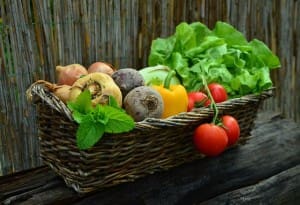 Time and time again, we have heard that diet and exercise are important for a healthy life. But it’s not always easy to eat right and to eat healthy in our modern world. For some in our communities, we find ourselves busier than ever, and rely on snack foods, prepackaged meals, and fast food as an easy and quick way to eat. For others, healthier food choices may be many miles from home and more expensive. Especially for Elders living on a fixed income, those who cannot drive or do not have access to transportation, making healthy choices can be difficult.
Time and time again, we have heard that diet and exercise are important for a healthy life. But it’s not always easy to eat right and to eat healthy in our modern world. For some in our communities, we find ourselves busier than ever, and rely on snack foods, prepackaged meals, and fast food as an easy and quick way to eat. For others, healthier food choices may be many miles from home and more expensive. Especially for Elders living on a fixed income, those who cannot drive or do not have access to transportation, making healthy choices can be difficult.
Unfortunately, across Indian Country the modern diet has contributed to shocking health disparities for all AI/AN and especially for Elders. Obesity is a problem in many of our communities, with nearly 40% of Elder men and more than 46% of Elder women obese. In our communities, the rates of diabetes are twice as high as that of the general population. Among AI/AN Elders, nearly 1 in 3 have diabetes. Diabetes in particular can have devastating impacts on health, and sometimes even results in blindness or the amputation of a limb.
It wasn’t always like this, though. A century ago, obesity and diabetes were very rare in Indian Country. The destruction of our traditions and forced removal to reservations contributed to this problem because they also resulted in a shift in dietary practices. Where our ancestors hunted and gathered foods local to their traditional homelands, this practice became more difficult when relocated and discouraged from continuing traditional practices. The federal government also provided nations with commodity foods that were completely foreign to the traditional AI/AN diet. While the reasons for the health disparities in our communities are more complex than these historical facts alone, the shift in diet is one worthy of our attention because it is one that we can take steps to change.
Leave a Reply